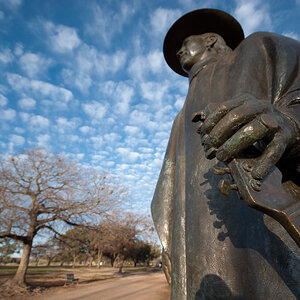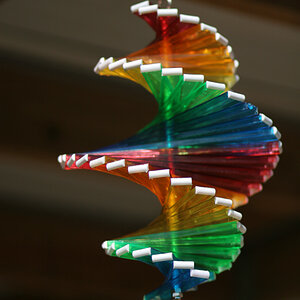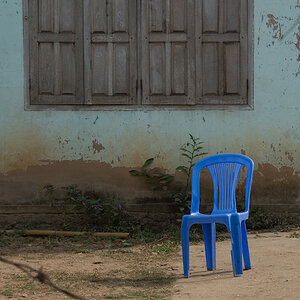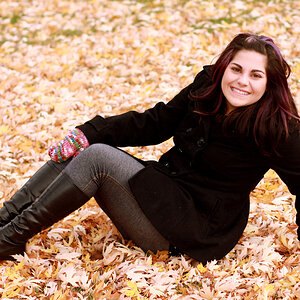- Joined
- May 1, 2008
- Messages
- 25,418
- Reaction score
- 4,999
- Location
- UK - England
- Website
- www.deviantart.com
- Can others edit my Photos
- Photos OK to edit
So having started up a new area of photography for myself I've found that I've come back to looking at the works of others for an idea of how they take their photos. However I've also found that approaching it somewhat ad hoc and without any structure leaves you going "ahh that's why" after the event rather than before, so I thought I'd strike up a discussion on this topic so that we can all learn to "read" photos better.
So what to look for - how to look for it - lets go! Note these are my thoughts and ideas, please add your views on them as well as your own things that you look for. Note for many things the use of editing can create a false lead. Personally unless the photographer states otherwise, assume no photoshop beyond simple corrections. No cropping - no significant exposure changes etc... Start with that approach as a base-line and work up from there. You might well find situations where its very clear that photoshop has been or has to be used to get the proper effect.
Tip - in your editing software of choice make yourself a little template with guide lines upon it so that you've a grid effect whilst having a transparent background. You can then impose this over the shots you're looking at. This can help in understanding some of the points raised below since the grid will help you line things up (esp in relation to what the viewfinder shows). Some editing software has automatic grids you can use without needing to make your own.
a) Composition itself - yep you've got the composition of the shot to look at. It helps here if you already know some compositional theories (rule of 3rds - golden circle - leading lines - how brightness affects eye attraction etc...). Once you know some theories you can start to see how they come together and play out over the frame. You can look for things like where the photographer has allowed for empty space - or where they've filled in the space.
Try as best as you can to get a grasp on the theories that are underlaying what you see. By doing that you start to understand what elements the photographer is looking for; what compositional components have come into play and panned out. It won't be the same every time, but it can start to give you some ground work for how they approach composing their photo.
b) Focus point selection - one that isn't evident at first as something you can take from a shot, but you can. You don't have to have the full meta data with the active AF point on show - but you can start to see what part of the frame is closest to the camera and in-focus - because that point will be what AF locks onto. From there you can start to judge how they've composed the shot (with point a) as well as how they've selected their AF point. It's a bit rough, but you can get a greater feel for how they've gone about taking the shot itself.
Note in some subject areas, like macro or landscape, AF might not come into the picture - although again you can still see where the focus is laying and that gives you a good hint as to how they are still composing and focusing, even if they are not using an AF point to work with.
c) Exposure itself - if the shot is online you can copy it and open it up in editing software and have a look at the histogram display. This along with what you see can give you some clues as to how they've exposed the shot. If they've left meta data up or stated out-right what settings they've used this is of great help. Again this is about looking at how the photographer has approached the shot - how they've chosen to work with the subject and light. You can see how close they've taken the whites to over-expose - how close the blacks are etc...
You can also look for subtle things - areas of blur suggesting a slower shutter speed - fuzzyness (of even out-right noise) potentially showing use of very high ISO; the nature of the depth of field (great or small). Note on the latter have a mind to the lens used if its stated - a tilt-shift will dramatically change how depth of field works in a shot.
d) Use of additional lighting or modifications. Have a look at highlight reflections (esp in eyes). Often you can come to see if the photographer has used a certain kind of light modification. Look at shadows too, sometimes (rare in skilled photographers) you can see alternate shadows suggesting more than one light source. Of course some things, light brighter shadows, can be the result of editing rather than flash or reflector use. It's challenging and almost a skill in itself to try and read this kind of info; but do have a look.
Also break the shot down - even if they've not used flash you can assume its the case and then consider how many and in what position lights would have to be to create the proper or at least similar effect. Think about where and how you'd position lights - now you're teaching yourself some lighting and getting some potential ideas.
e) Subject priority. Sometimes you might have a field of interest that presents multiple key subjects that might not be closely aligned. As a result the question is what is the primary - what subject is the shot most working for and which is the lesser one. Study and coming to get an understanding of how (and why) others have prioritised one over the other can be a big help in giving you some starting point ideas.
So those are a few of my thoughts on the subject, I'm sure there are more things that are of use that you might use yourself. So come and lets get some more ideas down or expand upon those already raised.
So what to look for - how to look for it - lets go! Note these are my thoughts and ideas, please add your views on them as well as your own things that you look for. Note for many things the use of editing can create a false lead. Personally unless the photographer states otherwise, assume no photoshop beyond simple corrections. No cropping - no significant exposure changes etc... Start with that approach as a base-line and work up from there. You might well find situations where its very clear that photoshop has been or has to be used to get the proper effect.
Tip - in your editing software of choice make yourself a little template with guide lines upon it so that you've a grid effect whilst having a transparent background. You can then impose this over the shots you're looking at. This can help in understanding some of the points raised below since the grid will help you line things up (esp in relation to what the viewfinder shows). Some editing software has automatic grids you can use without needing to make your own.
a) Composition itself - yep you've got the composition of the shot to look at. It helps here if you already know some compositional theories (rule of 3rds - golden circle - leading lines - how brightness affects eye attraction etc...). Once you know some theories you can start to see how they come together and play out over the frame. You can look for things like where the photographer has allowed for empty space - or where they've filled in the space.
Try as best as you can to get a grasp on the theories that are underlaying what you see. By doing that you start to understand what elements the photographer is looking for; what compositional components have come into play and panned out. It won't be the same every time, but it can start to give you some ground work for how they approach composing their photo.
b) Focus point selection - one that isn't evident at first as something you can take from a shot, but you can. You don't have to have the full meta data with the active AF point on show - but you can start to see what part of the frame is closest to the camera and in-focus - because that point will be what AF locks onto. From there you can start to judge how they've composed the shot (with point a) as well as how they've selected their AF point. It's a bit rough, but you can get a greater feel for how they've gone about taking the shot itself.
Note in some subject areas, like macro or landscape, AF might not come into the picture - although again you can still see where the focus is laying and that gives you a good hint as to how they are still composing and focusing, even if they are not using an AF point to work with.
c) Exposure itself - if the shot is online you can copy it and open it up in editing software and have a look at the histogram display. This along with what you see can give you some clues as to how they've exposed the shot. If they've left meta data up or stated out-right what settings they've used this is of great help. Again this is about looking at how the photographer has approached the shot - how they've chosen to work with the subject and light. You can see how close they've taken the whites to over-expose - how close the blacks are etc...
You can also look for subtle things - areas of blur suggesting a slower shutter speed - fuzzyness (of even out-right noise) potentially showing use of very high ISO; the nature of the depth of field (great or small). Note on the latter have a mind to the lens used if its stated - a tilt-shift will dramatically change how depth of field works in a shot.
d) Use of additional lighting or modifications. Have a look at highlight reflections (esp in eyes). Often you can come to see if the photographer has used a certain kind of light modification. Look at shadows too, sometimes (rare in skilled photographers) you can see alternate shadows suggesting more than one light source. Of course some things, light brighter shadows, can be the result of editing rather than flash or reflector use. It's challenging and almost a skill in itself to try and read this kind of info; but do have a look.
Also break the shot down - even if they've not used flash you can assume its the case and then consider how many and in what position lights would have to be to create the proper or at least similar effect. Think about where and how you'd position lights - now you're teaching yourself some lighting and getting some potential ideas.
e) Subject priority. Sometimes you might have a field of interest that presents multiple key subjects that might not be closely aligned. As a result the question is what is the primary - what subject is the shot most working for and which is the lesser one. Study and coming to get an understanding of how (and why) others have prioritised one over the other can be a big help in giving you some starting point ideas.
So those are a few of my thoughts on the subject, I'm sure there are more things that are of use that you might use yourself. So come and lets get some more ideas down or expand upon those already raised.
Last edited:




![[No title]](/data/xfmg/thumbnail/42/42277-63576745f84be96df79b94ca0f49e00b.jpg?1619740085)
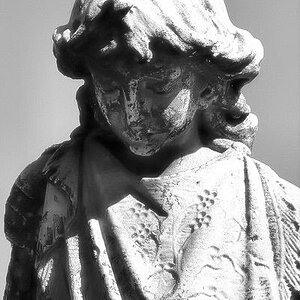
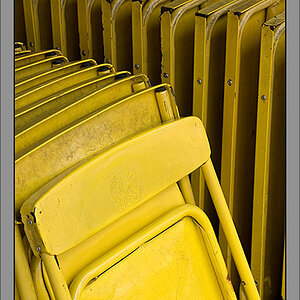
![[No title]](/data/xfmg/thumbnail/42/42279-f60778d39180ee6cd87fc84a15559b96.jpg?1619740087)
![[No title]](/data/xfmg/thumbnail/30/30879-16ad830465e571dee0a784c7fa122909.jpg?1619734493)
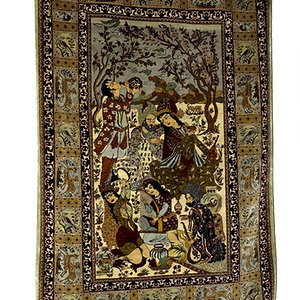
![[No title]](/data/xfmg/thumbnail/42/42397-30faa170de7ed9be38adf00b9b26a220.jpg?1619740167)
![[No title]](/data/xfmg/thumbnail/42/42278-22ed940cbdc5888a28d9be36006594dc.jpg?1619740086)
